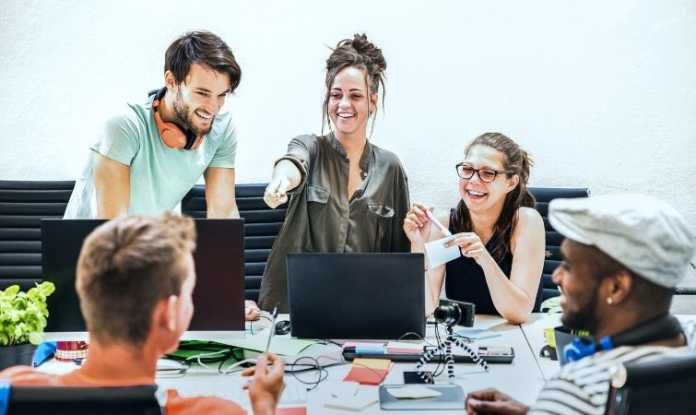In today’s fast-paced and highly interconnected business environment, effective communication and collaboration are crucial for the success of any team. The results can be transformative when team members can communicate, share ideas, and work together seamlessly. One of the most effective ways to foster better communication and collaboration within a team is through well-designed team-building activities. These activities allow team members to bond, build trust, and develop essential skills. In this article, we will explore some team-building activities that can significantly improve communication and collaboration among team members.
Icebreaker Games:
Icebreaker games are a great way to break down barriers and create a comfortable and relaxed environment for team members. These games help team members get to know each other better, fostering open communication and building rapport. Examples of icebreaker games include two truths and a Lie, human bingo, and the marshmallow challenge. By encouraging conversation and interaction, icebreaker games set the stage for improved communication and collaboration throughout the team-building session.
Problem-Solving Activities:
Engaging team members in problem-solving activities can enhance their ability to communicate effectively and collaborate towards a common goal. Activities such as a scavenger hunt, escape room challenge, or building a bridge using limited resources require teams to collaborate, share ideas, and communicate their strategies. These activities encourage active listening, cooperation, and finding creative solutions. By working through challenges together, team members develop a deeper understanding of each other’s strengths and learn how to leverage them for better collaboration.
Trust-Building Exercises:
Trust is the foundation of effective communication and collaboration within a team. Trust-building exercises help team members develop trust in each other’s abilities, intentions, and reliability. Activities such as blindfolded obstacle courses, trust falls, or the minefield game require individuals to rely on their teammates and communicate clearly to accomplish the task. These exercises build trust by fostering vulnerability and demonstrating the importance of clear and honest communication. When team members trust each other, they are more likely to collaborate openly, share ideas, and support one another.
Communication Workshops:
While team-building activities provide hands-on experiences, dedicated communication workshops can offer valuable insights and tools for improving communication and collaboration. These workshops cover active listening, non-verbal communication, conflict resolution, and effective feedback. Through interactive exercises, role-playing scenarios, and discussions, team members can better understand their communication styles and learn techniques for more effective communication. By equipping team members with these skills, workshops impact the team’s ability to collaborate and communicate.
Outdoor Adventures:
Taking the team out of the office and into the outdoors can be an excellent way to improve communication and collaboration. Outdoor activities such as ropes courses, hiking, or team sports require teams to work together, communicate clearly, and trust each other in unfamiliar environments. These activities foster a sense of camaraderie and can break down hierarchical barriers that may exist within the team. Outdoor adventures allow team members to connect personally, strengthening their working relationships and improving their ability to collaborate effectively.
Team-Building Retreats:
Team-building retreats offer a more immersive and extended experience for members to bond and improve communication and collaboration. These retreats typically involve team-building activities, workshops, and facilitated discussions. Retreats create an atmosphere conducive to building stronger relationships and encouraging open communication by removing team members from their daily work environment. Retreats also allow uninterrupted time to address challenges, set goals, and develop strategies for better collaboration.
Volunteer Activities:
Engaging in volunteer activities as a team can profoundly impact communication and collaboration. Working together towards a common cause outside of the office environment fosters a sense of unity and purpose among team members. Whether participating in a community service project, organizing a charity event, or volunteering at a local shelter, these activities require collaboration, communication, and coordination. Team members must work together to plan and execute tasks, delegate responsibilities, and adapt to unforeseen circumstances. Engaging in volunteer activities improves communication and collaboration and instills a sense of pride and accomplishment in the team, further strengthening their bond.
Team-Building Games and Simulations:
Engaging in unique team-building activities such as games and simulations designed to enhance communication and collaboration can be highly effective. These activities often simulate real-life work scenarios and require team members to work together towards a common objective. Teams can challenge their problem-solving abilities, strategic thinking, and communication skills by participating in business simulations or strategy games. These interactive experiences provide a safe and engaging environment for teams to practice effective collaboration, decision-making, and adaptability, ultimately improving their communication and collaboration dynamics.
Cross-Functional Projects:
Collaboration across different departments or teams within an organization is essential for achieving synergy and fostering innovation. Cross-functional projects allow team members from various backgrounds and expertise to collaborate on a common goal. By working together, team members better understand each other’s roles, perspectives, and challenges. This understanding enhances communication and collaboration as team members learn to leverage their diverse skills and knowledge to achieve optimal outcomes.
Reflection and Feedback Sessions:
To ensure continuous improvement in communication and collaboration, it’s crucial to incorporate reflection and feedback sessions into team-building activities. After each activity or project, allocate time for the team to reflect on their experience. Facilitate discussions where team members can share their observations, successes, and areas for improvement. Encourage open and constructive feedback, focusing on both individual and team performance. These sessions create opportunities for self-awareness, learning, and growth, enabling the team to refine communication and collaboration strategies.
Conclusion
Effective communication and collaboration are the bedrock of successful teams. Organizations can foster an environment that promotes open communication, trust, and collaboration by incorporating well-designed team-building activities into the team’s development process. From icebreaker games and problem-solving activities to trust-building exercises and outdoor adventures, numerous activities exist. Communication workshops, team-building retreats, volunteer activities, and cross-functional projects offer unique opportunities for team members to develop their skills. By embracing these activities, teams can enhance their communication and collaboration capabilities, improving productivity, innovation, and overall success.



























